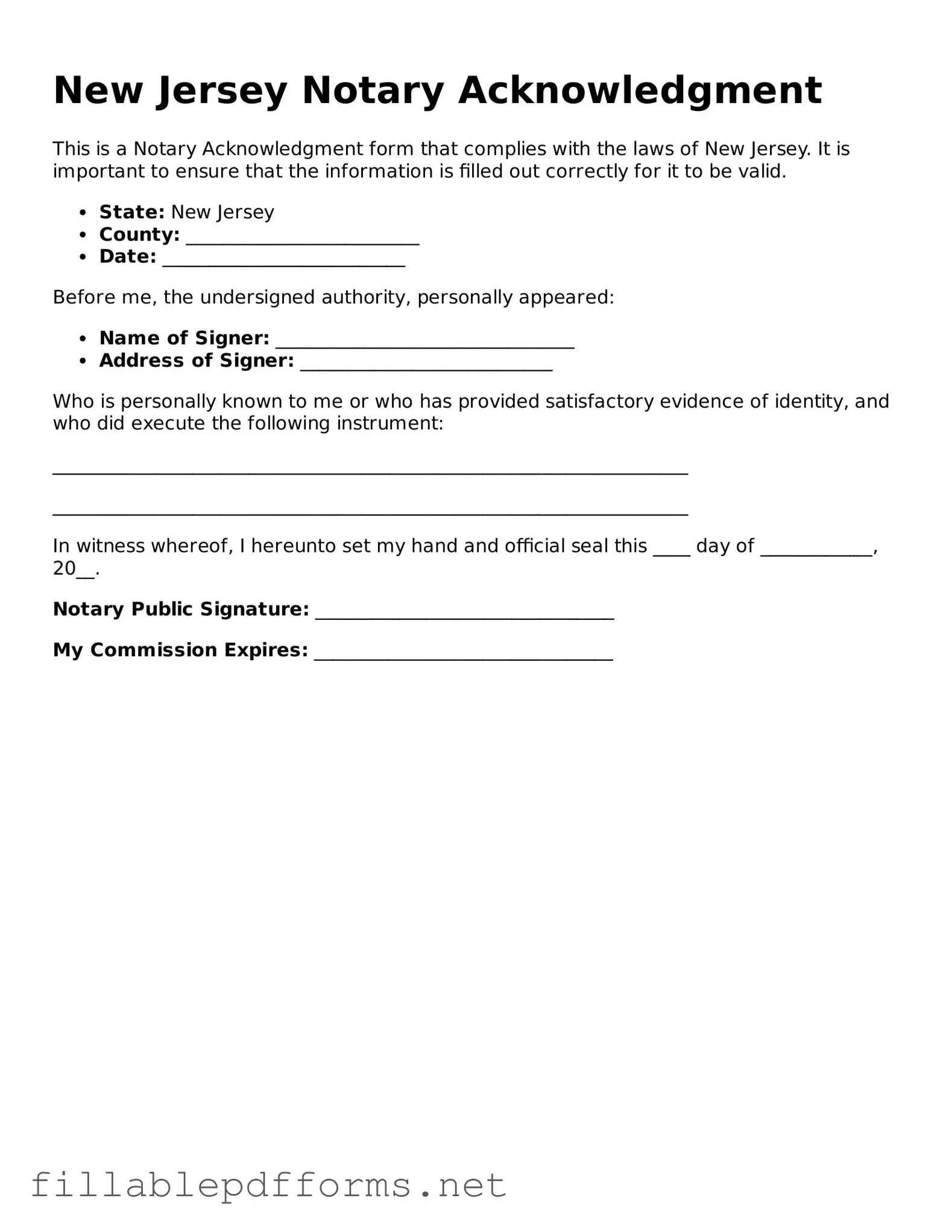Attorney-Verified Notary Acknowledgement Form for New Jersey State
The New Jersey Notary Acknowledgement form is a legal document used to verify the identity of a signer and their willingness to sign a particular document. This form is essential in ensuring that the signing process is conducted properly and that the document is legally binding. Understanding its components and requirements is crucial for anyone involved in legal transactions in New Jersey.
Launch Editor Here
